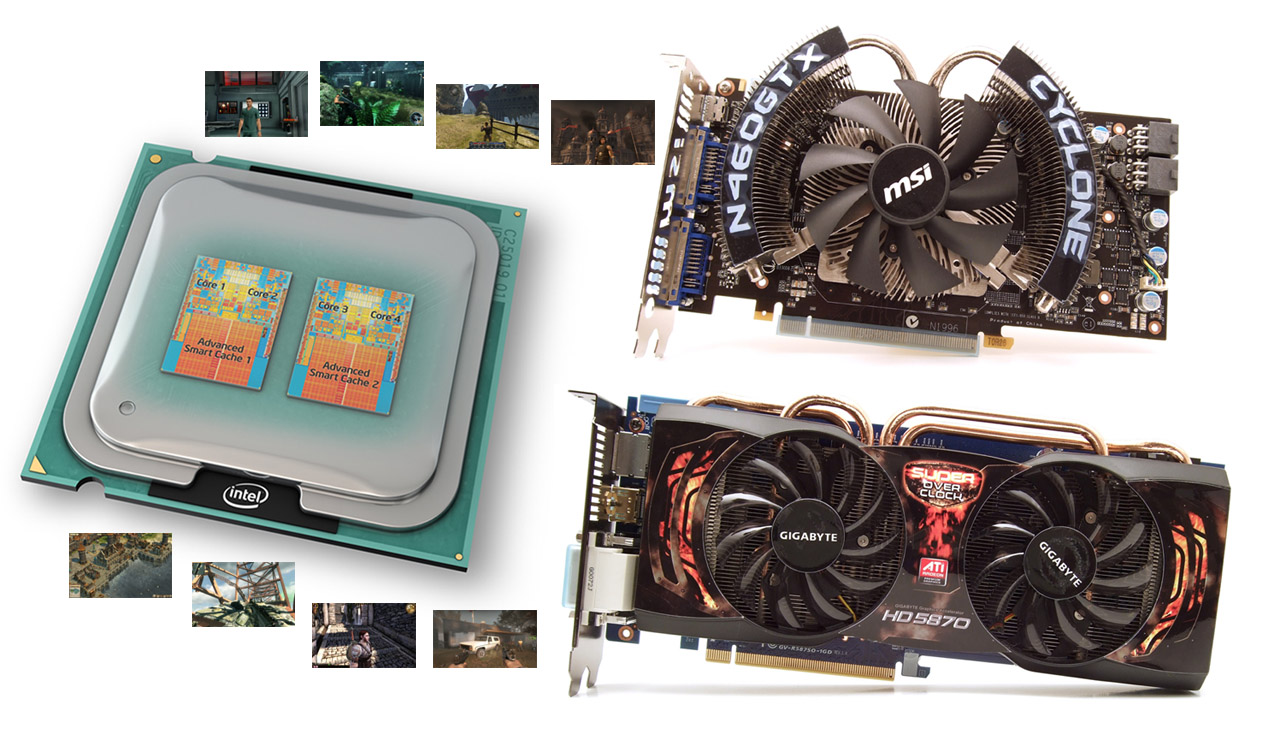The Game Rundown: Finding CPU/GPU Bottlenecks, Part 1
Wondering if your favorite game wants more CPU or GPU muscle? We tested 20 different titles using a GeForce GTX 460 and a Core i5 processor (one of our favorite configs) in order to figure out where a solid mainstream machine gets hung up.
20 Games To Help Uncover The Bottlenecks
There are several questions we're often asked about CPUs and GPUs that we wanted to answer in this article:
- Do I need a quad-core CPU or is dual-core enough?
- What would be the performance impact of mixing a powerful graphics card with a weak CPU?
- Should I invest my money in a better processor or faster graphics?
- How much GPU and CPU performance do I need for HD-class gaming?
Of course, we already have a wealth of information on the site covering these questions indirectly. You can start with Paul Henningsen's Building A Balanced Gaming PC series, and read back through Parts 1-4, all of which are linked here.
For this article, we go after each question head-on. We decided to abandon our usual benchmarking style and instead focus solely on actual in-game results, experienced first-hand. Throughout multiple runs, we tried to keep the real-time gaming consistent, but a slight margin of error was unavoidable. Some slight fuzziness in the results was a fair trade-off in order to reach our true goal: analyzing the CPU and GPU under actual gaming conditions to show just how those two components can hold each other back, influence results, and even help each other.
To answer the questions above, we modified our BIOS settings in order to test different CPU performance levels--so you're not just going to see the results with a stock Core i5 processor. We settled on a base clock frequency of 3 GHz, as this should be within reach for many of today's overclockable mainstream CPUs. We then forced the Core i5 to run in single-, dual-, and quad-core configurations to test and verify multi-core optimizations in our games. As a best-case scenario, the quad-core Core i5 was overclocked to 4 GHz--a reasonable clock rate for this particular model given heat, power consumption, voltage, and stability considerations.
The CPU was paired with a GeForce GTX 460 (768 MB), which is sufficient for most games at HD resolutions. In a few cases, we used the more powerful AMD Radeon HD 5870 to illustrate differences in graphics performance more clearly. Testing was done at a 1920x1200 resolution. Anti-aliasing and anisotropic filtering were set to 8xAA and 16xAF whenever possible via in-game settings to keep the results independent from AMD- and Nvidia-specific driver options. No special software or executable tweaks were used to force anti-aliasing on, meaning that if we were not able to activate a given setting in the game options, then we simply didn't use it. Our 20 games spanned from DirectX 9 to DirectX 11.
This article is Part 1, and it discusses the first 10 games. Part 2 will include test results from 10 more games, overall results, and conclusions.
Get Tom's Hardware's best news and in-depth reviews, straight to your inbox.
Current page: 20 Games To Help Uncover The Bottlenecks
Next Page Test Configuration-
adonn78 Its True GTA4 can use 1.68GB of Video RAM at 1920x1200. And up to 1.8GB at higher res. The game can get pretty choppy unless you got a 2GB video card and a quad core. They even fixed the shadows so that they use less VRAM but it still craves GPU memory.Reply -
It would have nice to see what is making my favorite game Company Of Heroes be bottle-necked. I have a GTX 480 and an AMD 955@3.4 GHz and i still get laggy frame rates when there is heavy action and weather. Settings all maxed out on dx10 at 1400x900. I heard that the hard drive is what it makes it lag...Reply
-
NuclearShadow GTA IV is one of the few games that I could actually see the performance difference with my own eyes when I was on my i7 920 rig with 6 GB of ram and a 4890 when I overclocked. That was a pretty damn good rig (and still is)Reply
Something I was amazed by in this article is that games like MW2 give pretty good frame rates when running on a single core. I would have never expected such. 59.1 fps would certainly be acceptable for game-play. Also its a shame to see that so many modern titles really don't take that much advantage having so many cores. It's been more than enough time for this to be adjusted and yet the performance difference in most titles seems minimal between 2 and 4 cores. (or in some cases even 1 core) At this rate everyone is going to commonly have 12 core CPU's and most games will still only truly utilize two.
-
baracubra OMG this is exactly the article I've been craving since my upgrade from 8800GT SLI to GTX 470.Reply
I have a Q6600 @ 3.6 but in BF:BC2 I only get around 40% GPU load and 80% CPU. However, my frame rates are in-line with those in this article...
Anyway I really look forward to the next article!!!! -
skora This needs to be a staple and have a section in the charts! This is by far one of the most useful articles I've read in a long time and really get down to what matters based on title. Great job TK!!!!!!!!!!!!Reply
Chris, make a section in the charts for this and keep them updated please!!!!! -
archange You need a better GPU. With the GTX 460 768 MB, the bottleneck shifts strongly towards the GPU, making a comparison between dual/quad cores and 3 to 4 GHz quite pointless.Reply
This is best showcased by the introduction of the HD 5870 in single and crossfire mode - in the last chart - you can really see FPS picking up.
